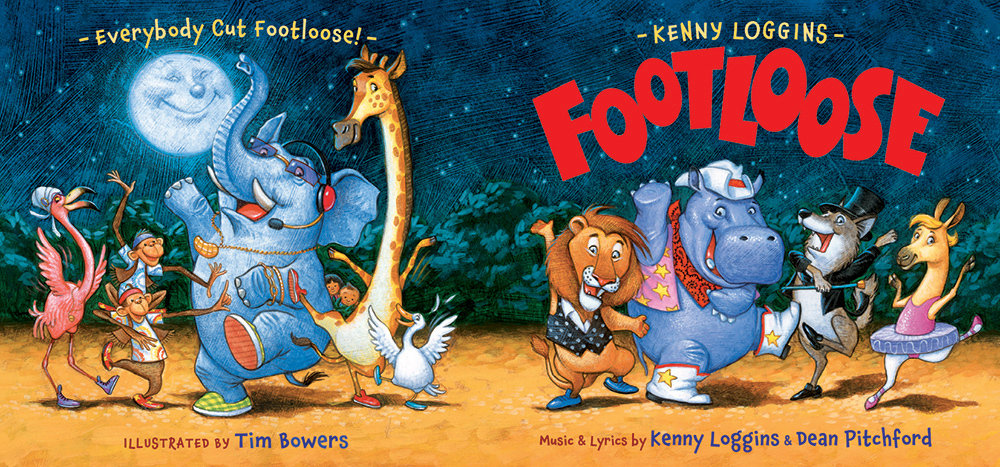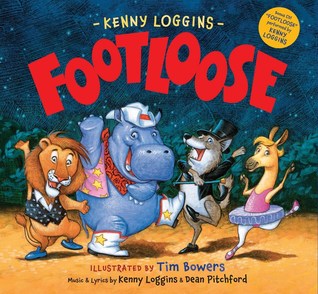Of Kangaroo Kisses and Hippo Headaches
by Nandana Dev Sen
Well, it all started with a rather ordinary bath, and a naughty little girl called Hiya. When asked to get out of the tub and go to bed, my niece noisily turned the tap on. “Two more minutes!” she yelled over the water. “I’m just NOT clean enough yet for bed!” Then – a succession of “two more” minutes later -- when I finally handed her a hippo-headed toothbrush, out burst another loud protest. “Two more minutes, Toom-Ma!” She flashed her almond-shaped eyes at me with reproach. “My hippottamouse has a bad headache, you see – if I brush my teeth now it’ll only get WORSE! We have to wait for it to go away!”
Hiya had coined her own name for me as a baby, a combination of my Bengali nickname Toompa, and the universal “Ma.” And she has always been my Hiya Pari, or Heart Fairy. This never-ending bath was happening not too long before Hiya Pari’s fourth birthday, so Toom-Ma decided to write Kangaroo Kisses, in rhyming couplets, as a birthday-book for her. Now, this was not such an extraordinary decision, as it turns out. A rather long (and compulsive) tradition of poetry runs in my family – indeed, in my city. If you’re born in middle-class Kolkata, it’s assumed that you’ll spend a certain number of years writing poetry, good or terrible, until you decide otherwise. My mother, who published her first book of poetry as a teenager and has over 80 books in print, hasn’t given it up till date – nor had her equally successful poet parents, ever. (And as a surprise gift for my mother’s 75th birthday, I translated and published a book of her poems, Make Up Your Mind.) My sister (Hiya’s mother) and I grew up writing poems and limericks about practically everything, from the grand beauty of the first monsoons, to the pooping habits of our cats. Instead of cards, we’d write birthday poems for each other. And instead of the cinema or the zoo, we were taken to poetry readings, book fairs, and literary meets. We grew up in the old book-filled house where my mother was born and still lives (and where we’d get regularly pushed out of rooms by ever-growing piles of books). Books felt like family members to us, some warm and cuddly, some cranky and unwieldy. So, writing a book for Hiya seemed like a very normal thing to do.
While my muse for the indefatigable little heroine of Kangaroo Kisses is Hiya, the book is equally focused on the girl’s (mostly) patient mother, who must navigate the daughter’s endless excuses, each more inventive than the last, and find a way to get her ready for bed. I wanted to write about this very special, tender moment between parent and child, a moment of great closeness and trust, and very often, of playful negotiation – when the goal of bringing playtime to an end is often achieved, ironically, through another kind of “play.” It’s a time of day that’s precious to both parent and child; in some ways, it is perhaps even more special for the parent, for it gives her a chance to play too. In fact, every time I’ve read Kangaroo Kisses out in public – including its UK release at the Hay Festival, and its New York launch in Books of Wonder, both packed beyond capacity - I was delighted by the robustness with which the adults matched the children’s enthusiasm, laugh for laugh and shout for shout. Each time I read out the little girl's line “Not yet!,“ all the grown-ups in the audience yelled back “NOT YET!” just as passionately as their kids. Not one of them wanted to stop playing, and listening to all that laughter and noise, you wouldn’t think that anyone in the room would ever willingly want to go to sleep.
I’ve always been fascinated by the magical zone between being awake and falling asleep, and that’s perhaps another reason why Kangaroo Kisses had to write itself. It’s that time of day when the imagination slips out of its leash and runs totally wild. It’s when I think of all kinds of outrageous books to write. When I make absurdly ambitious plans for my future. When I have long, detailed conversations in my head with people I like, and people I don’t like. And it all happens just before I fall asleep, when absolutely anything seems possible. I wanted to bring into Kangaroo Kisses this sense of limitless possibility and unbound imagination, interwoven with a lively, loving parent-child repartee that was, in contrast, firmly rooted in reality.
What I love most about writing for children is this enchanted and inexhaustible interplay of fantasy and reality. I also love the fact that it allows you to use fantasy to make reality more vivid for kids (including, sometimes, difficult realities from which privileged children can be quite disconnected). Like Kangaroo Kisses, my first book Mambi and the Forest Fire was inspired by a very real (though less private) event in my life – the story came together during a workshop I was doing with children rescued from trafficking. The book is about a monkey who doubts her own abilities and wants to be like her older, “cooler” jungle friends, but discovers that she is the bravest one of them all. Mambi came into my life in a room full of amazing kids in SNEHA, a children’s home in Kolkata. The plan for the day was to encourage the children to express themselves through theatre and dance, but because most had come from traumatic pasts, at first they had little confidence in themselves. Though they were incredibly creative and resilient, most didn't believe they had any 'gifts' worth sharing - that everyone else was, somehow, much better at doing all things. Struggling to break the ice, I found myself conjuring up my friend Mambi, the shy but spunky monkey - and by the end of the afternoon, I was playing with the most boisterous bunch of kids, who kept creating characters and filling up the entire forest (and then set it on fire)! The transformation was incredibly moving. It’s been wonderful to see how strongly children respond to this story - I’ve now done sessions with over 12,000 kids - which is as much a colorful, fantastical jungle adventure as it is a story about the very real issue of accepting yourself, and celebrating being different. I believe very strongly in the need to embrace diversity in our children’s books, and I wanted to find a fun and engaging way of making kids think about the fact that everyone is equally special.
In Kangaroo Kisses too, representing diversity was a priority right from its conception, both for me and for my visionary publisher, Janetta Otter-Barry. It was important to both of us that the girl and her mother should look and act like they could be from anywhere in the world. I always saw our heroine as a very spirited (rather than dollish) little girl of color, possibly biracial. Presenting our Kangaroo at the NAIBA conference just a few days ago, I was amazed by the number of booksellers who came up to me to say how rare it was for a children’s book to bring in diversity without making it a forced “issue.” “It’s important that she’s just like any other little girl,” said Hilary, “doing everyday things such as getting ready for bed.” “I agree,” added Mindy. “I’m glad she’s doing ordinary things in an ordinary setting. Books like this can make such a difference to the way a child sees herself and her peers.”
On the train back to New York from Baltimore, I started thinking again about what an extraordinary privilege it was, in an ordinary world, to write for children. And how it had all started with a rather ordinary bath. And a very naughty little girl called Hiya.



































